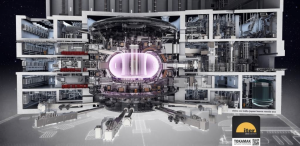Plasma physics, including fusion research is generally characterised by complex and high-dimensional systems described by nonlinear equations. Therefore, numerical simulations have always played a crucial role in this research area. Currently, plasma physics is taking a bold step, moving from interpretive to predictive simulation. This will allow, for example, the optimisation of fusion power plant designs on supercomputers.

Within VECMA the fusion contributors (from the Max Planck Institute of Plasma Physics) are building a multi-scale workflow looking at coupling small spatial scale and fast temporal scale turbulence models with a larger space and slower time scale transport model. When the turbulence code outputs are inherently noisy due to the chaotic nature of the turbulence (intrinsic uncertainties), or if input data such as external sources contain uncertainties (extrinsic), these need to be propagated through different models of the workflow. The goal, therefore, is to produce temperature and density profiles, along with their confidence intervals. This information will then allow for an improved validation of the simulation results against the experimental measurements that come with error bars.
